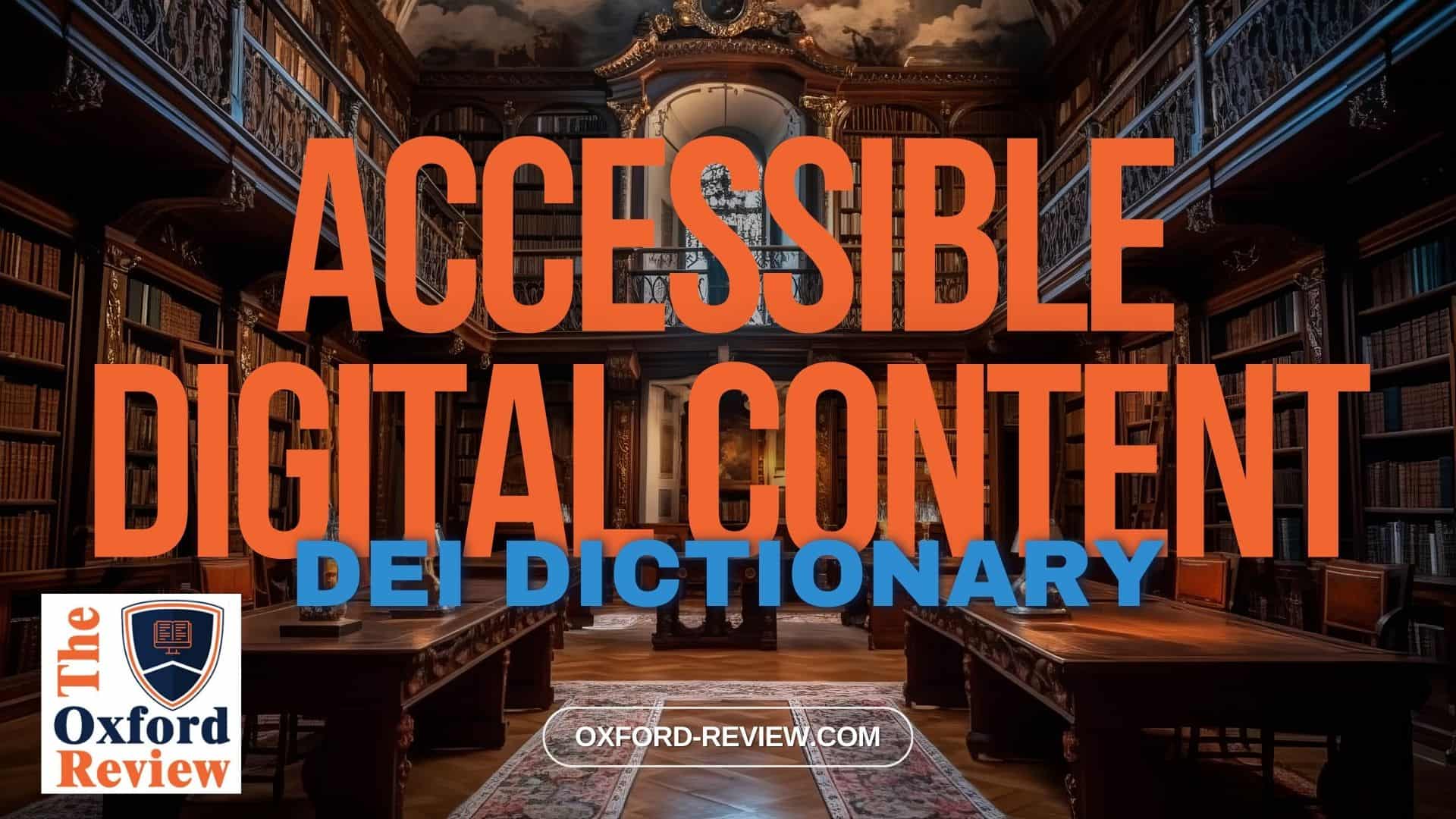Accessible Digital Content – Definition and Explanation

Understanding Accessible Digital Content: A Key Component of DEI
In today’s digital age, accessibility extends far beyond physical spaces. Accessible Digital Content (ADC) is vital for promoting Diversity, Equity, and Inclusion (DEI) online.
Definition:
Accessible Digital Content refers to digital materials, such as websites, documents, videos, and applications, designed and developed to be easily navigable, understandable, and usable by individuals with disabilities. It ensures that everyone, regardless of their physical or cognitive abilities, can access and interact with digital content effectively.
Why Accessible Digital Content Matters for DEI:
- Inclusivity: ADC promotes inclusivity by ensuring individuals with disabilities have equal access to information and resources online, fostering a more diverse and equitable digital environment.
- Compliance: Many countries have laws and regulations, such as the Equality Act in the UK, mandating digital accessibility. Adhering to these standards is not just a legal requirement but also a moral obligation for organisations committed to DEI.
- User Experience: Implementing accessibility features improves the overall user experience for all users, not just those with disabilities. For instance, captions in videos benefit individuals with hearing impairments as well as non-native speakers.
- Market Expansion: By making digital content accessible, organisations tap into a larger audience base, including individuals with disabilities who represent significant purchasing power.
Examples:
- Alt Text in Images: Adding alternative text descriptions to images enables individuals using screen readers to understand the content. For example, a clothing website includes alt text describing each item, allowing visually impaired users to browse and shop independently.
- Captioned Videos: Providing captions or subtitles in videos ensures that individuals with hearing impairments can comprehend the content. A company’s training videos include captions, making the training accessible to all employees, regardless of their hearing abilities.
- Keyboard Navigation: Designing websites and applications with keyboard accessibility allows individuals with mobility impairments to navigate without a mouse. An online learning platform ensures all features can be accessed and operated using only keyboard inputs.
Conclusion:
Accessible Digital Content is not only a legal requirement but also fundamental for promoting Diversity, Equity, and Inclusion in the digital realm. By prioritising accessibility, organisations contribute to a more inclusive online environment where everyone, regardless of abilities, can participate fully. Embracing ADC is not just about compliance but a commitment to creating a better, more equitable online world for all.
References:
Hanssen, E. (2023). Supporting content creators create accessible digital content in higher education (Master’s thesis, Oslomet-storbyuniversitetet). https://oda.oslomet.no/oda-xmlui/handle/11250/3102936
Be impressively well informed

Get the very latest research intelligence briefings, video research briefings, infographics and more sent direct to you as they are published
Be the most impressively well-informed and up-to-date person around...
